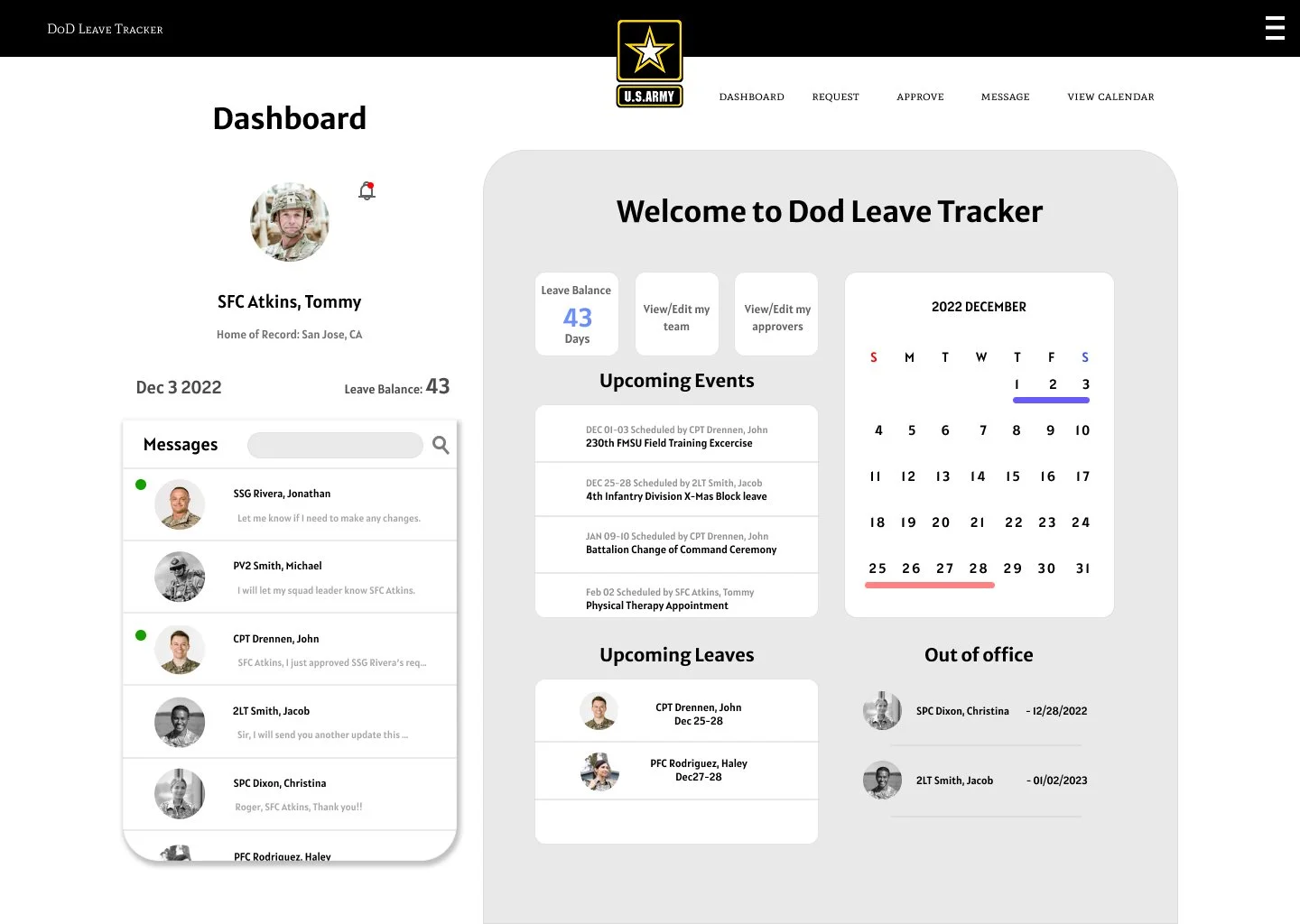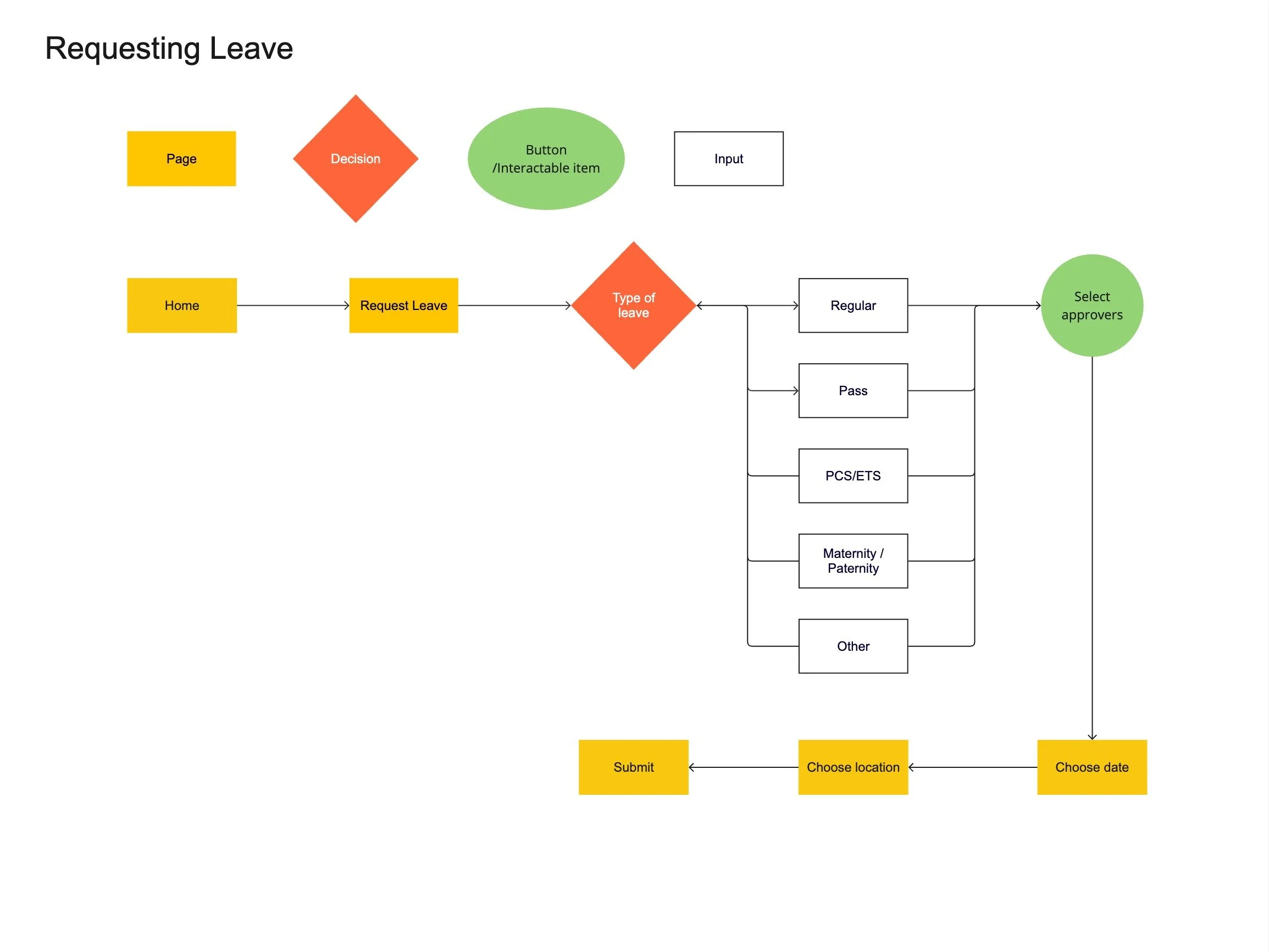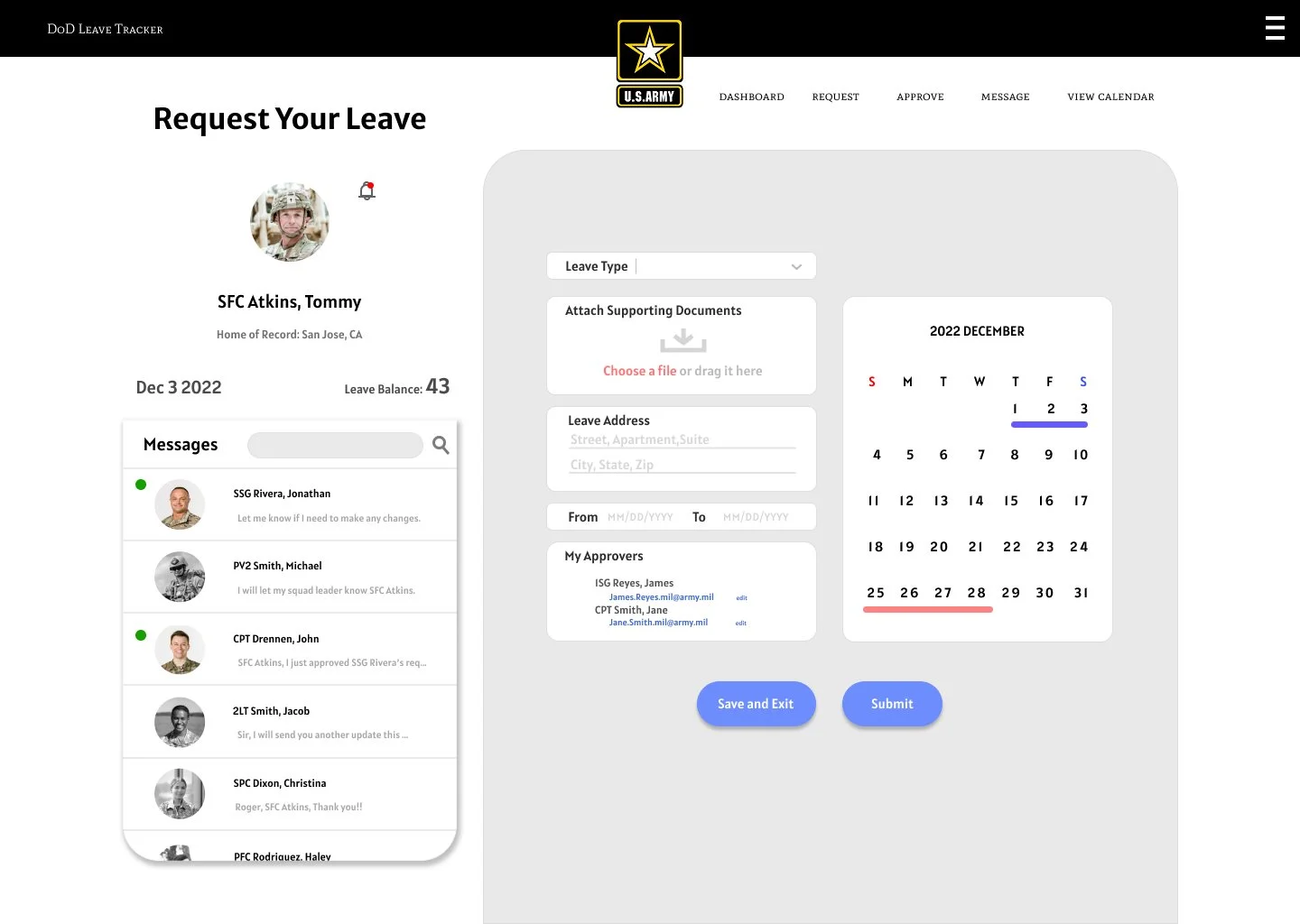Overview
Time away from duties and training is essential for the well-being of Soldiers. The Army allows Soldiers to take leave as long as it does not interfere with critical training schedules or mission requirements.
As a finance Soldier, I have processed thousands of approved leave forms, recalculating leave balances, travel days, and entitlements. However, the manual processing of these forms is a significant challenge within the finance corps. This issue is especially evident after major leave periods, such as holiday block leave, when we receive stacks of leave forms that must be processed manually. The backlog not only delays leave processing but also slows down the completion of other essential financial tasks, creating inefficiencies across the office.
Given the simplicity of the leave request process itself, I saw an opportunity to improve it. The reliance on paper-based forms makes the system unnecessarily time-consuming and prone to errors. I began exploring alternative solutions to modernize and streamline the process, ensuring that leave requests could be handled more efficiently and with greater accuracy.
Research Question
“How might we improve the accuracy and efficiency of military leave processing to prevent errors and financial issues for Soldiers?”
The goal of the research is to identify potential solutions to improve the process of requesting and processing soldiers’ leave. My main goal was to see different opinions from soldiers who have different jobs and positions. I tried to find potential participants from different ranks and positions in our finance office.
Interview
After the screening survey was done, I was able to select 5 participants to interview. I tried to focus on the problem rather than the solution to fully understand each user’s characteristics and needs regarding the problem I am trying to solve. Each interview lasted between 25-35 minutes
Interviewed participants are familiar with either the process of requesting/approving leave
Developing a point of view
I did affinity mapping to take data I acquired during competitive research and the interview. Visually organizing information into groups of themes based on commonalities was very helpful to understand the pain point of the current system
Findings
1. Leave Forms Take Up a Significant Portion of Finance Office Workload
Finance personnel estimate that processing leave forms takes up 40-75% of their workload, with higher percentages after the holiday season.
This workload prevents finance soldiers from focusing on more technical and tactical training, such as military pay, accounting, and budgeting.
2. The Current Leave Processing System is Inefficient and Outdated
The process involves multiple layers of approval, making it time-consuming and difficult to track the status of leave requests.
Soldiers often do not know where their leave forms are in the approval process, leading to frustration and inefficiency.
Mistakes in manually filled leave forms (wrong information, missing documents) cause additional work and require commanders to submit correction memos.
3. Issues with Accountability and Fairness in Leave Policies
Some soldiers manipulate the system by signing out earlier than their approved leave date or submitting incorrect information.
Higher-ranking soldiers (E-6 and above) can sign out over the phone, while E-5 and below must sign out in person, leading to fairness concerns.
Some units, such as 1st Brigade and Special Forces 10th Group, do not require soldiers to sign in and out for leave, which raises integrity and accountability issues.
4. Resistance to Change and Lack of Prioritization Hinder Modernization
Many believe that no one in leadership sees digitalization as an urgent issue, despite widespread dissatisfaction with the current system.
The Army has reportedly been working on a digital solution for over two decades without implementing it.
Financial systems in the Army are interconnected with other outdated programs, making it harder to replace the current process.
User Flow Chart
Final Design
U.S. Army’s Leave
Request System
My very first case study while serving in the U.S. Army(2022)
The U.S. Army currently uses letter-sized paper forms to process leave and pass requests. This system is prone to issues such as lost paperwork, incorrect leave dates being charged, and financial complications for soldiers down the line. Based on my personal experience in the Army, I recognized these challenges and sought to address them by digitalizing the process. A digital system would ensure more accurate tracking of leave dates, reduce errors, and improve overall efficiency, ultimately benefiting both soldiers and administrative personnel.

















